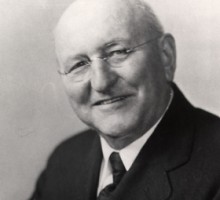Goodwill Keystone Area
For 75 years, Goodwill Keystone Area has forged a strong legacy of creating inclusive communities and providing people with barriers to employment opportunities to achieve economic independence. Today, our efforts to collect donations, sell affordable items and help individuals through the power of work are happening every day across 22 central and southeastern Pennsylvania counties where we operate.
As workforce needs continue to evolve, so does our outlook and focus to address these needs.
We are committed to be on the leading edge of workforce opportunities and help those we serve thrive and flourish long-term. This commitment to training and development for the jobs of tomorrow is also extended to our employees. We encourage team members to pursue growth opportunities and support them on their career paths.
Goodwill’s North Star is advancing sustainability in our communities and internally with our employees, and our focus includes:
Human Sustainability: Offering employees resources to grow their skills and capacity, and supporting their well-being.
Social Sustainability: Creating pathways to generational wealth through training for jobs of tomorrow and services that promote diversity, equity, inclusion and belonging.
Economic Sustainability: Growing revenue and proceeds needed to sustain and build our retail operations, mission and business services.
Environmental Sustainability: Expanding efforts to enhance environmental impacts in our communities.
Our outlook builds on the foundation created over the past 75 years and guides our work that will sustain us for the next 75 years and more.
History
 Goodwill was founded in 1902 in Boston by Rev. Edgar J. Helms, a Methodist minister and early social innovator. Helms collected used household goods and clothing in wealthier areas of the city, then trained and hired those who were poor to mend and repair the used goods. The goods were then resold or were given to the people who repaired them. The system worked, and the Goodwill philosophy of “a hand up, not a hand out” was born.
Goodwill was founded in 1902 in Boston by Rev. Edgar J. Helms, a Methodist minister and early social innovator. Helms collected used household goods and clothing in wealthier areas of the city, then trained and hired those who were poor to mend and repair the used goods. The goods were then resold or were given to the people who repaired them. The system worked, and the Goodwill philosophy of “a hand up, not a hand out” was born.
Dr. Helms’ vision set an early course for what today has become a $4 billion nonprofit organization. Helms described Goodwill Industries as an “industrial program as well as a social service enterprise…a provider of employment, training and rehabilitation for people of limited employability, and a source of temporary assistance for individuals whose resources were depleted.”
Times have changed, but Helms’ vision remains constant: “We have courage and are unafraid. With the prayerful cooperation of millions of our bag contributors and of our workers, we will press on till the curse of poverty and exploitation is banished from mankind.”

